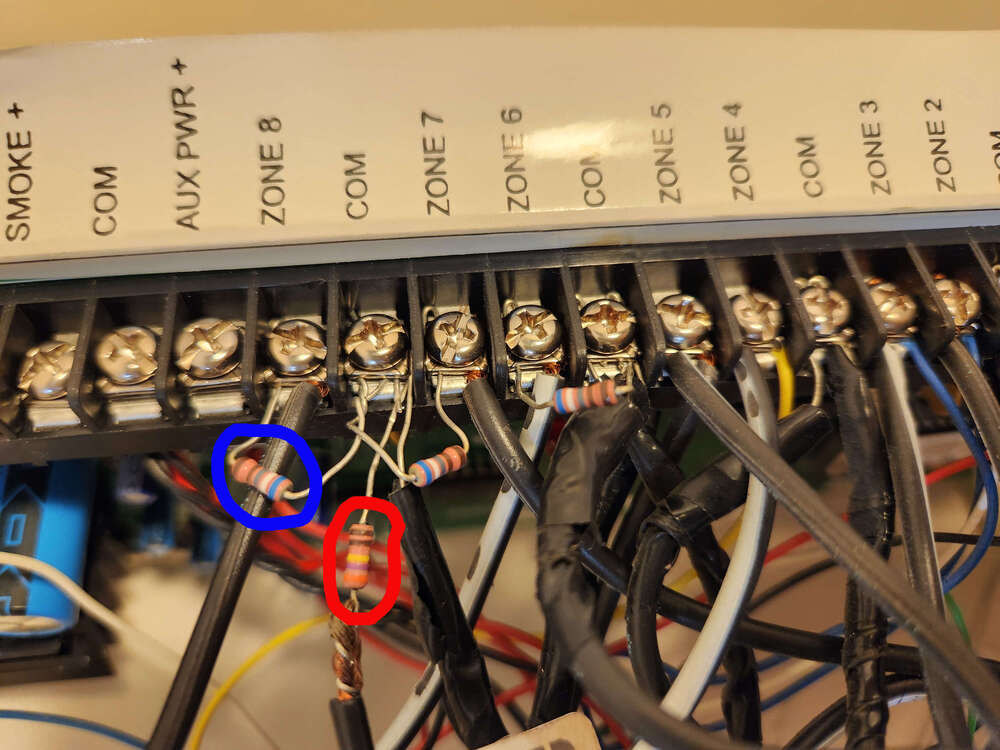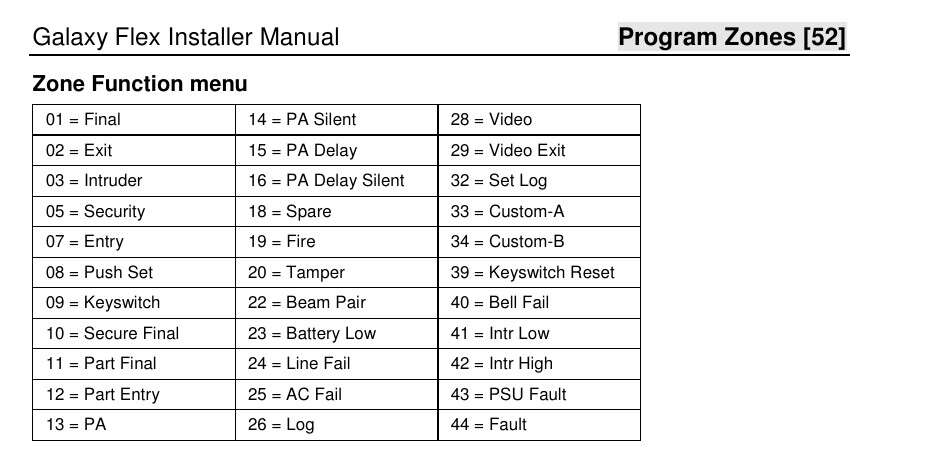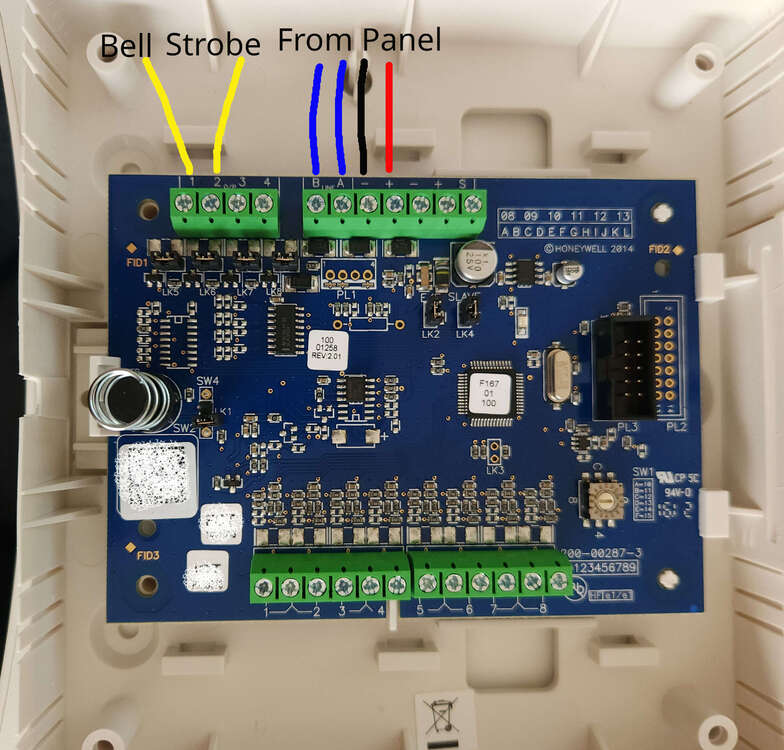
Grego
Member-
Posts
54 -
Joined
-
Last visited
Content Type
Profiles
Forums
Events
Downloads
Gallery
Blogs
Everything posted by Grego
-
Thanks James, I've read the Honeywell docs and it does support EOL mode (see below from the manual), so I will be going for the wiring below for the window reed switches. It's not ideal, but plan to change later. I will also be wiring the PIR units as per previous advice from sixwheeledbeast...
-
I appreciate the professional installers on this forum, and I understand that my situation may seem less than ideal. I want to assure you that I am doing everything I can to improve the current circumstances. This situation is not intentional, and if there were a straightforward solution, I would have implemented it already. However, there are some challenges that will require time and effort to address. Your advice and guidance are valuable to me, and I truly appreciate your support. Thanks, Mark
-
Well, if you ever find yourself in a bar brawl with a kangaroo, at least you'll have a cold Castlemaine XXXX as a peace offering! ?
-
It's a photo of the old system. Which explains why it's being upgraded. But yes, I can see your point.
-
That's the old system ?
-
Thank you James, much appreciated.
-
Starting to wire up the window zones (as previously discussed). My existing system (see photo below) had resistors across the common pin and zone pin (circled in blue), and a resistor in series with the windows (circled in red). That is because my current system is zone doubling. I assume on the new galaxy FX100+ (because I am not planning on zone doubling) I just follow the diagram as previously discussed here in my Previous Post and will only need a single 1k resistor as per the one circled in red above? Hate to keep asking, so please excuse my questions. Once I have my head around this for one zone I will be fine.
-
While we're talking zones. I've begun entering zone information into my system, but I am stuck on what to define each zone? See below, this is taken from the Galaxy Flex Installer Manual. My requirements are extremely simple. I will have several zones for windows, PIR's, and some for doors. So might the windows be set as 03 = Intruder? And what zone type might the PIR's be set, especially the PIR's that oversee the front and back doors? The front door will have a keypad, and the internal garage door will have a keypad, so I assume those doors will need to allow entry... so might they be assigned the zone type of 07 = Entry. Question for the professionals on here... are there standard zone types you use, and under what circumstances do you use them? All advice appreciated.
-
Sadly it was a 4 core basic cable, that was run inside the window frames whilst the house was in frame stage. I am older and some might say wiser now... but that doesn't help me deal with what younger me installed I'll go with SEOL for now, and whilst I agree with the expertise on here that the approach I am planning on taking is not ideal, unfortunately right now options are limited. GalaxyGuy who supplied me the FX100+ system would be horrified with the setup I am sure?
-
Thank you for the explanation. My ability to add the shunt resistor to each reed switch is near impossible, given the cabling was roughed in during construction. 18 years ago when we constructed the house I would have done the cabling in a much different way had I known. Given where I am, I figured SEOL would likely be the only way to go. And telling my wife I need to pull apart each window isn't an option ?
-
When you say DEOL I assume you mean double end of line? I feel stupid asking, so apology... in this particular case how might DEOL come into play?
-
Yes, understood, and can see why it might be best option. Each window zone has at most 3 or 4 reed switches, some less. Retrofitting resistors to each reed switch would be significantly challenging as per the reasons I explained in the post above.
-
Yes, there are 'window' zones that are divided by windows on the north, south, east, and west sides of the house. Each window has a reed switch daisy chained to a 'zone' cable that runs back to the alarm panel. For example, a cable runs from the first window reed switch on the east facing side, to the next east window, and then the next... etc. From the last east facing window the cable runs back to the current alarm panel. The current alarm panel has a resistor on the panel connector (see photo up the top of this thread). Doors are on separate individual zones. Retrofitting a resistor for each window reed switch would be challenging, as the cabling was installed when the house was constructed. Hope this helps.
-
I have several zones that are made up of windows that have reed switches and they go back to my current panel. The reed switches dont have individual resistors, and retro fitting is not an option. I assume I can install a 1k resister as per the diagram? Or do I need to do something else? All guidance appreciated.
-
I cannot quite make out the colours... is it a 680 kΩ resistor?
-
Another question, this time related to keypads. I have 2 x Mk7 keypads with prox. I noticed a photo on this site that had a resistor on the keypad wiring (see below). \ So my question... If I connect 2 key/proxpads to my FX100+ I do so in series... in that I connect a cable between the FX100+ to the first keypad, and then run a cable from the first keypad to the second keypad? Also, I assume both key/proxpads have a resistor installed on them? Thanks in advance for any advice.
-
Would you have any suggestions for relays? Loads to choose from, so interested to see what might be the most suitable from a professional perspective.
-
Yes, I figured that was the most likely option. Thanks. Yes, to ensure the RIO or panel is not overloaded, due to the panel being some distance from the RIO.
-
Only thing I am a bit confused about is how I wire the siren and strobe to be independently powered from an external 12 volt source? See the photo below, if I provide an external 12 volts for the strobe and the siren where does the power go in to the RIO?
-
Yes, agreed. Will keep the old PIR's and will add resistors as per @sixwheeledbeast suggestion.
-
Regarding the siren and strobe... It's hard to explain, however the RIO is going to be placed in a studio that is separate from our main house. The studio is where my wife manufactures glass jewellery, so we thought extending the new security system by using a RIO made sense. Being a separate building I figured having an independent siren and strobe made sense. I've run an 8 core cable between the house and studio, and yes agree the siren and strobe should be powered independently. I was advised outside this forum it's best to have a battery backed supply, as if mains fails, the RIO will power off causing tamper. But I figure if the RIO get's power from the panel and the siren/strobe are independently powered it might not be an issue.
-
Only issue I could see, I had planned on the RIO having a PIR, siren, and strobe directly attached. Those devices connected to the RIO would need to have 12 volts which I am thinking the RIO is unlikely to get from the panel. So I was thinking having a 12 volt UPS style power supply powering the RIO and devices might be a better approach. Only thing, I am unsure what to use to UPS power the RIO.
-
Thanks for that, really appreciate it. I am open to replacing the PIR's, so if you have a suggested make/model PIR that is compatible with a Galaxy Flex that would be great.
-
The wiring distance between the RIO and the panel would be approx 20 to 25 meters. I was worried that distance might be an issue with powering the RIO?
-
Not sure if this is the place to ask... but here goes. I have a Galaxy Flex RIO unit that I want to add to my system. Unfortunately it's not the powered RIO. Don't suppose anyone has a clever idea for powering a non-powered RIO like it was a powered RIO?






